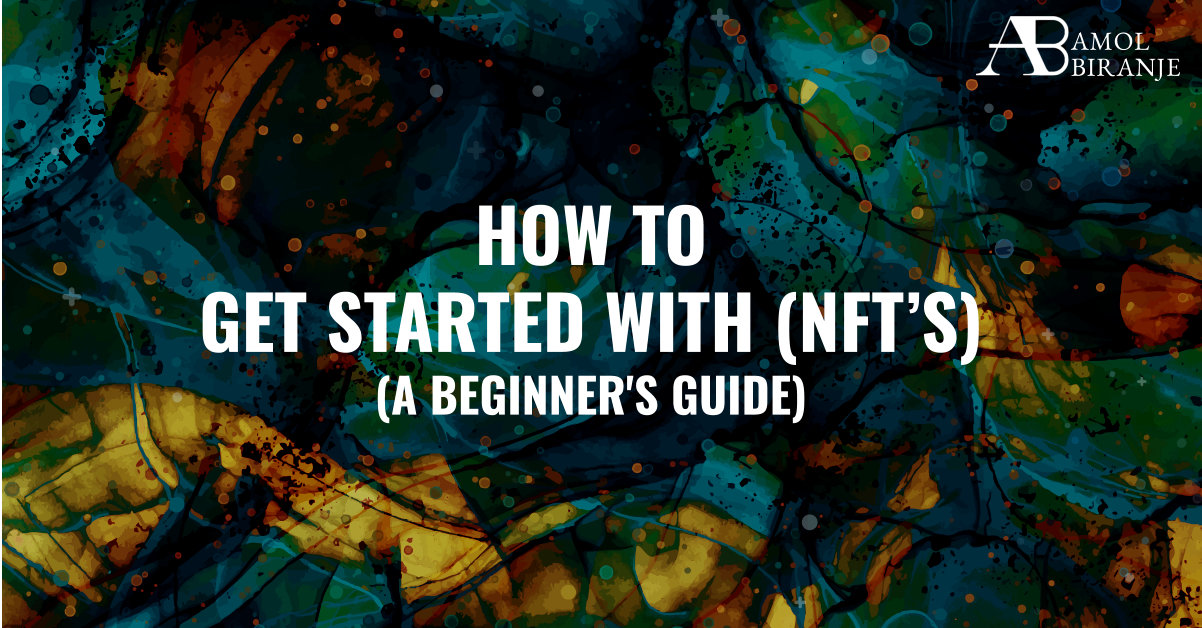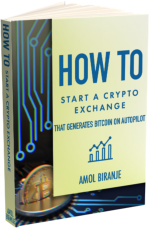Introduction
In recent years, NFTs (Non-Fungible Tokens) have gained significant attention and popularity in the digital world. From artwork to virtual real estate, NFTs have opened up new avenues for artists, creators, and investors to showcase, trade, and own unique digital assets. If you’re a beginner and interested in exploring the world of NFTs, this “How to Get Started with NFTs: A Beginner’s Guide”is for you. I’ll walk you through the basics, explain key concepts, and provide step-by-step instructions on getting started with NFTs.
Understanding NFTs
Before you dive into how to get started with NFTs: a beginner’s guide, you will first have to understand the basics that are mentioned below:
What are NFTs?
NFTs, or Non-Fungible Tokens, are unique digital assets that exist on a blockchain, typically on Ethereum. Unlike cryptocurrencies such as Bitcoin or Ethereum, which are fungible and can be exchanged on a one-to-one basis, NFTs have distinct properties that make them one-of-a-kind and indivisible. Each NFT carries a specific value and ownership record, making it easily identifiable and distinguishable from other tokens.
How do NFTs work?
NFTs rely on blockchain technology to establish ownership, provenance, and scarcity. They are created using smart contracts, which contain the necessary information about the asset, including its metadata, ownership details, and transaction history. The blockchain ensures the immutability and transparency of these records, allowing anyone to verify the authenticity and ownership of an NFT.
The uniqueness of NFTs
The uniqueness of NFTs is a fundamental characteristic that sets them apart. While digital files can be easily copied and shared, NFTs introduce a level of scarcity and ownership to the digital realm. NFTs can represent various forms of digital assets, including artwork, music, videos, virtual real estate, collectibles, and more. The value of an NFT is often tied to its rarity, popularity, or the reputation of the creator.
Exploring NFT Marketplaces
Popular NFT marketplaces
There are several popular NFT marketplaces where you can buy, sell, and explore a wide range of NFTs. Some of the well-known marketplaces include:
OpenSea
Rarible
SuperRare
Foundation
NBA Top Shot
Setting up an account
To get started with NFTs, you’ll need to create an account on one or more NFT marketplaces of your choice. The account setup process typically involves providing your email address, creating a username, and securing your account with a strong password. Make sure to activate two-step verification to enhance your security measures.
Navigating the marketplace interface
Once you have set up your account, familiarize yourself with the marketplace interface. Explore different categories, discover trending NFTs, and use filters to narrow down your search based on your preferences. Take your time to browse through various collections and get a sense of the types of NFTs available.
Creating or Acquiring NFTs
Minting your own NFT
If you’re an artist or creator, you have the option to mint your own NFTs. Minting involves creating a unique digital asset and uploading it to an NFT marketplace. The process usually includes providing detailed metadata, such as title, description, and accompanying files. Once minted, your NFT will be available for purchase or bidding by other users.
Buying NFTs from artists and creators
If you’re not an artist but still want to own NFTs, you can browse through the collections of artists and creators on the marketplace. When you find an NFT that you’re interested in, you can purchase it directly using cryptocurrency. Make sure to review the details, such as the artwork itself, its edition number (if applicable), and any additional benefits or royalties associated with the NFT.
Participating in NFT auctions
Some NFTs are sold through auctions, allowing users to bid on the assets until a specific deadline. Auctions can be an exciting way to acquire highly sought-after NFTs. Take note of the starting bid, minimum bid increments, and the duration of the auction. Be mindful of your budget and avoid getting caught up in bidding wars that may drive up the price beyond your comfort level.
Storing and Managing NFTs
NFT wallets
When you acquire NFTs, it’s essential to have a secure wallet to store and manage them. NFT wallets are digital wallets specifically designed for holding and interacting with NFTs. Choose a wallet that supports the blockchain on which your NFTs are based. Well-known choices encompass MetaMask, Trust Wallet, and MyEtherWallet.
Securing your NFTs
As NFTs have monetary value, it’s crucial to take steps to secure them. Use strong, unique passwords for your NFT marketplace accounts and wallets. Enable two-factor authentication wherever possible. Consider using a hardware wallet for an extra layer of security. Be cautious of phishing attempts and carefully verify the URLs and sources before entering sensitive information.
Transferring and selling NFTs
If you decide to sell or transfer your NFTs, the process is relatively straightforward. Most marketplaces provide options to list your NFTs for sale or initiate a transfer to another wallet. Ensure that you understand the associated fees and gas costs (transaction fees) before proceeding. Double-check the recipient’s wallet address to avoid any accidental transfers.
Understanding the Value of NFTs
Understanding the values of the NFT’s written in this How to Get Started with NFTs: A Beginner’s Guide is mentioned below:
Rarity and scarcity
One of the primary factors influencing the value of an NFT is its rarity and scarcity. NFTs that have limited editions or unique qualities tend to be more valuable in the market. Factors such as the reputation of the creator, historical significance, and cultural relevance can also impact the perceived value of an NFT.
Authenticity and provenance
NFTs leverage blockchain technology to provide a secure and transparent record of authenticity and provenance. Every NFT has a unique identifier that links it to its original creator and tracks its ownership history on the blockchain. This information provides buyers with confidence in the authenticity and origin of the NFT they are acquiring.
The Role of blockchain technology
Blockchain technology plays a vital role in the world of NFTs. It serves as the underlying infrastructure that enables the creation, ownership and secure transfer of NFTs. Blockchain ensures the immutability and transparency of the ownership records, making it virtually impossible to alter or forge the history of an NFT. Additionally, the decentralized nature of blockchain eliminates the need for intermediaries, allowing for direct peer-to-peer transactions.
Participating in the NFT Community
Engaging with artists and creators
One of the exciting aspects of NFTs is the opportunity to engage directly with artists and creators. Many artists use NFT marketplaces as a platform to showcase their work and connect with their audience. You can interact with artists by leaving comments, asking questions, and even purchasing their NFTs. Building relationships with artists can provide you with a deeper understanding of their creative process and potentially open doors to exclusive opportunities.
Joining NFT communities and forums
To further immerse yourself in the NFT world, consider joining NFT communities and forums. These online communities are filled with enthusiasts, collectors, artists, and experts who share their knowledge and experiences. Participating in discussions, asking questions, and sharing your own insights can help you expand your understanding of NFTs and stay up to date with the latest trends and developments in the space.
Attending NFT events and conferences
Another way to enhance your knowledge and network within the NFT community is by attending events and conferences dedicated to NFTs. These events often feature panel discussions, keynote speeches, workshops, and networking opportunities. They provide a platform for industry leaders, artists, and enthusiasts to come together, share ideas, and showcase their work. Attending such events can offer valuable insights, connections, and inspiration for your NFT journey.
Risks and Considerations
Volatility in the NFT market
It’s important to be aware that the NFT market can be highly volatile. The value of NFTs can fluctuate greatly, influenced by factors such as market trends, the popularity of artists, and overall investor sentiment. Prices that soar one day may experience significant corrections the next. As a beginner, it’s advisable to exercise caution, do thorough research, and invest only what you can afford to lose.
Potential scams and fraudulent activity
As with any emerging industry, the NFT space is not immune to scams and fraudulent activities. It’s crucial to be vigilant and skeptical of suspicious offers or deals that seem too good to be true. Before making any transactions, verify the credibility and reputation of the seller or marketplace. Allocate sufficient time to conduct thorough research and carefully examine reviews from reputable and reliable sources. Be cautious of phishing attempts and never share your private keys or personal information with anyone.
Environmental concerns
NFTs have faced criticism for their environmental impact due to the energy-intensive nature of blockchain technology. Ethereum, the most common blockchain for NFTs, currently operates on a proof-of-work consensus mechanism, which requires significant computational power and electricity consumption. However, there are ongoing efforts to transition to more energy-efficient alternatives, such as Ethereum 2.0, which aims to reduce the carbon footprint associated with NFT transactions.
Conclusion
By understanding the basics of NFTs covered in this “How to Get Started with NFTs: A Beginner’s Guide” exploring popular marketplaces, acquiring or minting your own NFTs, and actively participating in the NFT community, you can fully immerse yourself in this innovative digital ecosystem. However, it’s crucial to navigate the space with caution, considering the risks involved and staying informed about the evolving landscape of NFTs. So, take the first step, explore the world of NFTs, and unlock the opportunities it presents.
FAQs (Frequently Asked Questions)
How to Get Started with NFTs: A Beginner’s Guide
What is the difference between NFTs and cryptocurrencies?
NFTs are unique digital assets that represent ownership of a specific item or piece of content, while cryptocurrencies are fungible digital currencies that can be exchanged on a one-to-one basis.
Can I sell or trade my NFTs?
Yes, you can sell or trade your NFTs on various marketplaces. Ensure that you understand the associated fees and transaction costs before proceeding.
Are NFTs only limited to artwork?
No, NFTs can represent various digital assets, including music, videos, virtual real estate, collectibles, and more. The potential is immense and continuously evolving.
What steps should I take to guarantee the safety of my NFTs?
Use secure NFT wallets, enable two-factor authentication, and be cautious of phishing attempts. Ensure the security of your private keys and personal information.
What are some upcoming developments in the NFT space?
The NFT space is evolving rapidly. Expect advancements in blockchain technology, environmental sustainability efforts, and increased mainstream adoption of NFTs.














0 Comments